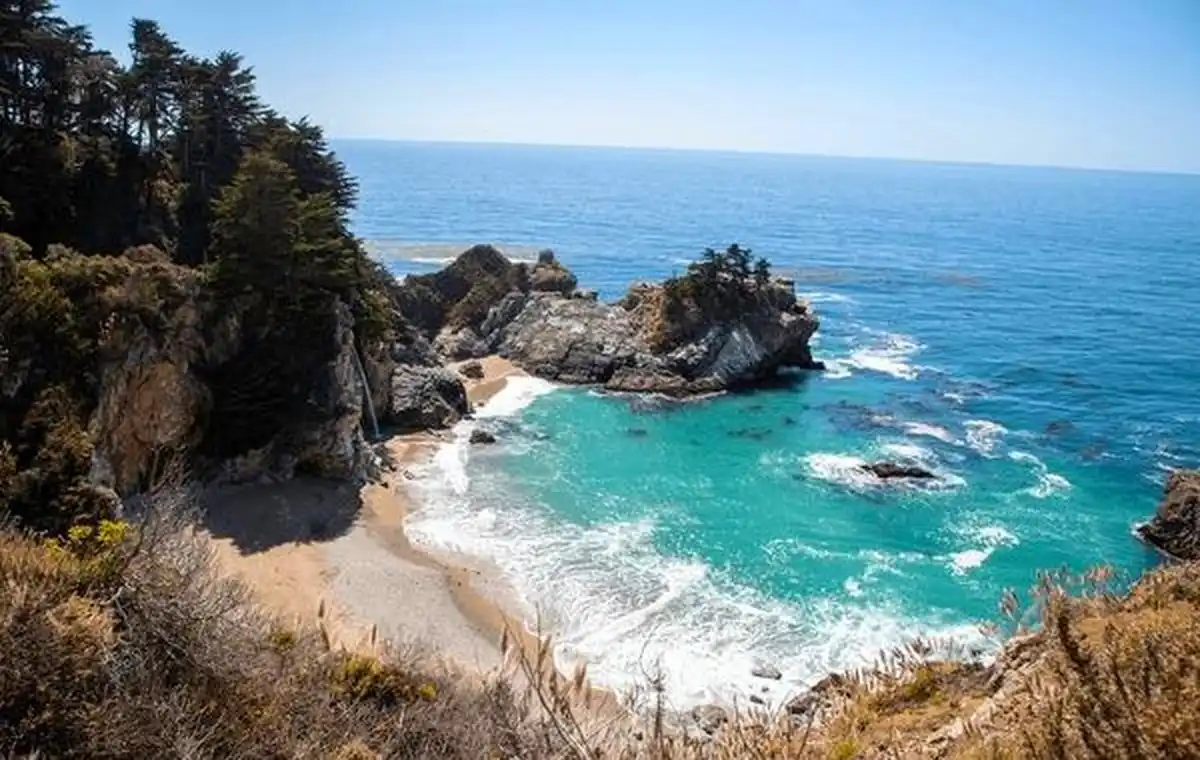
Exploring Americas Jazz Scene: Top Jazz Bars to Experience
Mia Gaitan - Mar 18, 2025 - 7 min read


To some, urban hiking is an oxymoron; to those who seek adventure within the confines of a concrete jungle, it's a revelation. Imagine skyscrapers above you, filled with the rhythm of the city in the streets; amidst this, you find small pockets of greenery, hidden trails, and the unexpected. It brings into play a little part of urban exploration with commencing with nature to relieve from the daily mundane; about embracing the contradiction, to find solace and reprieve in between hustle and bustle.
A most exciting prospect to consider is the prospect of discovery within the urban horizon itself. It covers from the hidden gardens to those silent streets and old ways that have been there since hundreds of years ago-all describing yet another city face while giving an understanding of how the soul of a place is, letting the differences of a place unfold to its natural aspects and on to its historic nature. Whether or not one possesses a penchant for hiking, beauty will emerge just little away from the trodden road.
In addition to the exercise, an urban trail also brings one into contact with other members of the community. Fellow hikers and joggers and dog walkers travel on the same trail, so you have a sense of community amidst the urban density. You may find gardens or public art installations, or even local landmarks to focus the community's interests. Urban hiking is not just walk from point A to B. It is about relationships as well as belonging within an urban environment.
As the world becomes progressively more urbanized, attachment to nature is now further essential than ever. For instance, urban hiking promotes the means of developing a notion of environmental awareness or recognition of the natural within a city. Exploring green spaces, parks, and urban forests can raise a hiker's knowledge about ecosystems that exist next to development. This increases awareness so that people begin to fight for conservation efforts, sustainable urban planning, and keeping the green space intact for generations.
In the case of urban hiking, it is very important that you wear comfortable shoes because you may walk on some pavement and gravel trails so look for the ones who will support and cushion you throughout the hike. Wear light, breathable shoes in order not to cause too much discomfort or blisters even after hours of walk. Hiking boots or trail runners, or durable sneakers are great options if you just ensure to go for comfort and durability on your hiking.
Lightweight backpack. Carry the bare essentials such as water, snacks, map, and any other gear you may need on your hike. One with a compact, ergonomic design and multiple compartments will be beneficial for your hike. Hydration pack or water bottle with built-in filtration system would be quite useful. Be minimalistic and keep your backpack light with just the essential items that can add comfort and convenience during hiking.
As much as urban hiking may not call for the same navigation techniques as in the wilderness trek, it would be useful to carry with you appropriate tools. It is useful to have a map of the area or a GPS-enabled device when navigating new trails and neighborhoods. Familiarize yourself with a few landmark and trail marks so you will not be confused or lost. You may also download your hiking apps and use other online resources that can plan your route for you ahead of time and even look for places of interest for you.
Be prepared, too, in case the weather is unstable, just like in cities. It should be layered so that if the temperature changes during the day, you can dress for it. Moisture-wicking fabrics will keep you dry and comfortable even while exercising vigorously. Bring a lightweight, waterproof jacket or poncho in case it rains. Don't forget to protect yourself from the sun with sunglasses, sunscreen, and a wide-brimmed hat. Dress accordingly to the weather; in fact, you will just as easily feel comfortable and well-prepared when rain seems to be coming too.
This is by far the most glaring choice for hiking through an urban environment: numerous parks and green spaces available throughout a city. From the large urban park to the small neighborhood greenway, these natural havens provide welcome relief from the concrete jungle. Seek out trails in wooded areas or those that meander along rivers or lakes or offer panoramic views of the city skyline. Other than hiking, the parks are excellent for having picnics and many other outdoor activities that do not take one out of the city limits.
For the time that you may wish to really delve into the urban sceneries, historic neighborhoods and cultural districts in a city offer some of these characteristics. Such areas can display a combination of interesting historical streets lined with old-time architecture, vibrant street murals, and eclectic shopping and dining establishments. Wander through cobblestone alleys, centuries-old buildings, and busy boulevards, getting the feel of each neighborhood. Many cities offer self-guided walking tours or thematic trails that celebrate the rich history and cultural heritage of the many neighborhoods, making for a rich and educational hiking experience.
The vast skyscrapers and cement cities house, unbeknownst, little islands of urban forests and nature reserves providing a taste of the wilderness inside the cities' walls. Therein lay the local flora and fauna and habitats of hiking and bird-watching and of nature photography. Discover curving trails that wind through dense woods, along babbling brooks, and up to breathtaking overlooks that reveal spectacular vistas of the surrounding terrain. Urban forests are valuable assets that serve as oases for wildlife and humans alike who seek refuge from the urban bustle.
For a different angle on urban hiking, explore the waterfront and riverfront trails that snake along rivers, lakes, or coastlines. The scenery is simply serene in these routes through the city streets, which offer great water views and refreshing sea breezes during hot summer days. Walking or biking along the waterfront promenade, crossing picture-perfect bridges, and stumbling upon secret coves and beaches along the shoreline. Riverfront trails connect bigger trail networks that take you along and explore other parts of the city by the water's edge.
Take a little time before you go out on your urban hike and plan your route, research the points of interest that you can see along the way. You might think about the distance and complexity of the trail together with the difficulty level you can handle. Don't forget such features like restrooms, water fountains. In this regard, there are many online maps and other hiking apps available to gain knowledge about the area, most probable detours, and possible detour routes in case of an unexpected closure or obstacles on your route. This will avoid unpleasant surprises along the path of your hike. Respect the Environment and Keep Safety in Mind
Although urban hiking appears to be less remote than wilderness trekking, there are always reasons to remember to be mindful of safety and respect for the environment and local communities. The general rule is to adhere to marked trails and obey signs or regulations regarding usage and conservation efforts. You will need to exercise extra care in crossing streets or going through busy intersections, as you should watch for traffic as well as pedestrians. Also, be sure to yield to other trail users, such as cyclists or dog walkers. Pack out all the trash or litter that you produce during your hike, and leave no evidence of your visit.
Urban hiking is filled with the element of serendipity, unexpected discoveries, and hidden treasures. So, let loose and take a detour off the beaten path as you wander through the city on foot, following curiosities and embracing spontaneity in urban exploration. You never know what you may stumble upon around that next corner – quirky street art, a bustling farmers' market, or a peaceful garden oasis waiting to be discovered. By embracing the element of chance that is serendipity, you will discover new experiences and make the most of your hike through the urban environment.
Lastly, do not forget to share your experience of urban hiking with others! Share your adventures through social media, a blog post, or just talking to friends and family. Share photos, stories, and recommendations from your hike to help fellow urban adventurers discover new trails and hidden gems. Spreading the delight of urban hiking will not only inspire other people to get connected to nature in the city but also bring like-minded people together.

Mia Gaitan - Mar 18, 2025 - 7 min read

Brian Garrity - Mar 14, 2025 - 12 min read

Emily Hazel - Mar 10, 2025 - 15 min read

Emily Hazel - Mar 7, 2025 - 10 min read